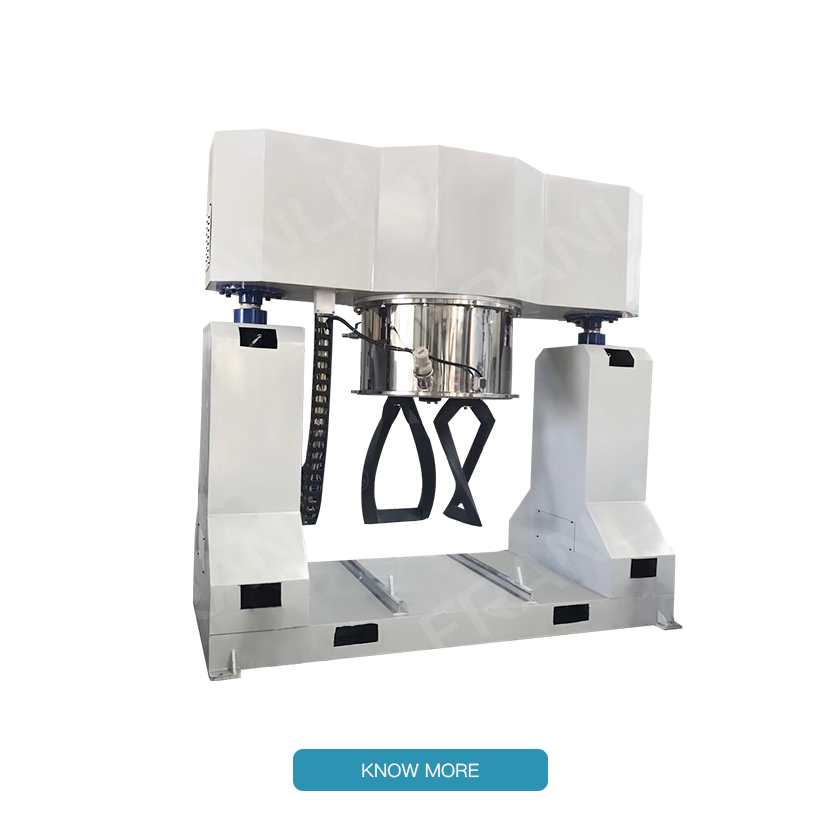-
Equipments
-
-
NEWS
- Double planetary mixer new t...
- Multiple paddle options of D...
- Double planetary mixer is th...
- Multiple mixing tanks with d...
- Double planetary mixer for c...
- Double planetary mixer can b...
- Double planetary mixer has E...
- Double Planetary Mixer Excel...
- Principle of asteroid rotati...
- Efficient and uniform mixing...
-
Contact Us
Or Contact Info
-
Coating
-
-
NEWS
- Double planetary mixer new t...
- Multiple paddle options of D...
- Double planetary mixer is th...
- Multiple mixing tanks with d...
- Double planetary mixer for c...
- Double planetary mixer can b...
- Double planetary mixer has E...
- Double Planetary Mixer Excel...
- Principle of asteroid rotati...
- Efficient and uniform mixing...
-
Contact Us
-
Adhesives
-
-
NEWS
- Double planetary mixer new t...
- Multiple paddle options of D...
- Double planetary mixer is th...
- Multiple mixing tanks with d...
- Double planetary mixer for c...
- Double planetary mixer can b...
- Double planetary mixer has E...
- Double Planetary Mixer Excel...
- Principle of asteroid rotati...
- Efficient and uniform mixing...
-
Contact Us
-
Agrochemistry
-
-
Agrochemistry
- Emulsifiable Concentrate
- Suspension Concentrate
-
-
-
NEWS
- Double planetary mixer new t...
- Multiple paddle options of D...
- Double planetary mixer is th...
- Multiple mixing tanks with d...
- Double planetary mixer for c...
- Double planetary mixer can b...
- Double planetary mixer has E...
- Double Planetary Mixer Excel...
- Principle of asteroid rotati...
- Efficient and uniform mixing...
-
Contact Us
-
Battery
-
-
Battery
- Battery Slurries
-
-
-
NEWS
- Double planetary mixer new t...
- Multiple paddle options of D...
- Double planetary mixer is th...
- Multiple mixing tanks with d...
- Double planetary mixer for c...
- Double planetary mixer can b...
- Double planetary mixer has E...
- Double Planetary Mixer Excel...
- Principle of asteroid rotati...
- Efficient and uniform mixing...
-
Contact Us
-
Cosmetic
-
-
Cosmetic
- Lipstick
- Eyebrow Pencil
- Ointment
-
-
-
NEWS
- Double planetary mixer new t...
- Multiple paddle options of D...
- Double planetary mixer is th...
- Multiple mixing tanks with d...
- Double planetary mixer for c...
- Double planetary mixer can b...
- Double planetary mixer has E...
- Double Planetary Mixer Excel...
- Principle of asteroid rotati...
- Efficient and uniform mixing...
-
Contact Us
What Is A Double Planetary Mixer?
The performance feature of the double planetary mixer is that the tank can be heated by electricity, steam, water, and oil. The unique temperature detection device on the drive shaft ensures that the temperature error of the material is less than ±1°C, and the jacket, bottom jacket, inner coil, and deflector can be cooled; the revolution and rotation of the stirring paddle in the tank are controlled by frequency conversion. Speed (frequency conversion motor), different speeds can be selected according to different processes and different viscosities. The speed measuring system directly gives the speed of different stirring paddles at that time.
The double planetary mixer is suitable for polymer lithium-ion battery fluid and liquid lithium-ion battery fluid, electronic electrode slurry, adhesive, mold glue, silicone sealant, polyurethane sealant, anaerobic glue, ink, pigment, cosmetics, Mixing, reacting, dispersing, dissolving, homogenizing and emulsification of liquid-to-liquid and solid-to-liquid materials in the ointment, electronic, chemical, food, pharmaceutical, building materials, and pesticide industries.
Features of Double Planetary Mixer:
1. The (trapezoidal) soft seal between the mechanical seal and the kettle body enables the material to be operated under vacuum;
2. The kettle body can be heated by electricity, steam, water, and oil circulation. The unique temperature detection device on the drive shaft ensures that the temperature error of the material is less than ±1°C, and the jacket, bottom jacket, and inner coil and deflector of the jacket can be cooled;
3. The inner wall of the kettle is finished by a large vertical lathe, and then automatically polished by a large polishing machine to ensure that the movable scraper (suitable for sealant) on the planet carrier completely scrapes off the material on the inner wall of the kettle when it rotates;
4. Twist frame type (paddle-to-paddle, paddle-to-bucket wall spacing 3-4mm) stirring paddle (multi-paddle), which rotates at the same time as it revolves, so that the material flows up and down and around so that it can be used in a very short time. To achieve a mixing (kneading) effect;
5. The revolution and rotation of the stirring paddle in the kettle adopt frequency conversion speed regulation (frequency conversion motor), and different speeds can be selected according to different processes and different viscosities. The speed measuring system directly gives the speed of different stirring paddles at that time.
The working principle of the double planetary mixer
The viscous mixer is equipped with low-speed stirring parts and high-speed dispersing parts, and the low-speed stirring parts are transmitted by planetary gears. The stirring paddle also rotates when it revolves, so that the material moves up and down and around, to achieve the ideal mixing effect in a short period. The high-speed dispersing component revolves together with the planet carrier and rotates at high speed at the same time so that the material is subjected to strong shearing and dispersing mixing, and its effect is several times that of ordinary mixers. The dispersing parts are divided into a single dispersing shaft and a double dispersing shaft, which can be selected by customers according to their needs. The two double-frame agitators revolve and rotate at the same time in the barrel, which can realize vacuuming, heating, and cooling, and the speed can be adjusted according to the situation. Equipped with multiple mixing barrels, one machine can operate with multiple barrels. Matching the press machine makes it more convenient to discharge.
Types of Double Planetary Mixers
The double planetary mixer has the characteristics of low speed and high torque. It not only has a stirring effect on products with high viscosity but also can shear and knead materials. The whole pot of material is driven up by the revolution. The rotation is to mix the material in the center of the container and the side and bring the material adhered to the wall of the container to the center of the container. Planetary stirring blades can be divided into frame stirring, butterfly stirring, finger stirring, turbine stirring, and newly developed spiral stirring according to the characteristics of the stirring materials.
l Claw Double Planetary Mixer
The claw-type double planetary mixer is mainly used for products with a viscosity of more than 1 million CPs. It not only has the functions of other stirring forms but also increases the mixing trajectory of the material stirring movement so that the material can be fully mixed in a very short time. Moreover, the use of two claw-type stirring paddles also has a kneading effect on the material. On this basis, FLE has developed a slurry mixer specially used for the production of silver paddles. The slurry mixer has the characteristics of a small stirring gap, no dead angle, small residual amount, and high stirring uniformity.
l Box double planetary mixer
The frame type double planetary mixer is composed of two-door frame type stirring paddles. According to the characteristics of the material, the frame-type stirring paddle can be added with horizontal or inclined gears to increase the fluidity of the material during the stirring process. The bottom of the stirring frame can be installed with a Teflon scraper that can automatically flip the angle to ensure that the material at the bottom can be fully mixed into the material. It is also possible to maintain a certain gap with the cylinder wall through the scrapers on the bottom and sidewalls.
l Finger double planetary mixer
The stirring paddle of the finger-type double planetary mixer is composed of many blades, also known as the folding-blade stirring paddle. The number of blades of the stirring paddle is determined according to the size of the stirring volume. The blades on one stirring paddle are divided into upper and lower parts. The lower blade makes the material flip up during the stirring process, and the upper blade makes the material flow during the stirring process. Flip down. The combination of two stirring paddles will make the material produce intricate mixing motion trajectories.
l Butterfly double Planetary Mixer
The butterfly-shaped double planetary mixer is composed of two butterfly-shaped stirring paddles. The stirring paddles are designed with three-blade butterfly-shaped paddles. According to the process requirements, each stirring spindle can be installed with two butterfly-shaped paddles. When two stirring shafts are used together, two butterfly-shaped paddles can be installed on one shaft, and a butterfly-shaped paddle can be installed in the middle of the other shaft. To ensure a good stirring effect at every level of the container.
l Lab double planetary mixer
The experimental double planetary mixer is mainly used for preliminary research and development, and the above various types of mixing can provide experimental equipment. The experimental equipment is generally 1-3L or 5-8L, and the vacuum system, hydraulic system, and control system are all standard configurations of this type of equipment. It can also be made of sanitary stainless steel material to meet GMP requirements according to user needs, or the container can be designed as a dumping structure to facilitate the user to discharge.
l Hook type double planetary mixer
The hook-type double planetary mixer is composed of two hook-type stirring paddles. The upper structure of the two hooks makes the material move downward, and the lower hook type is upturned to make the material move upward. This kind of hook-type stirring paddle usually requires a specially constructed container to be used together, the bottom of the container should be spherical and the middle part is convex upwards. This kind of stirring method is relatively simple, but it is very difficult to process and manufacture. Powder mixing is more common.
Copyright Notice :
This article only represents the author's point of view.
This article is published under the authorization of the author.
Source:
This article address : What Is A Double Planetary Mixer?
Related Suggestion:
Double planetary mixer new type of mixing equipment
Multiple paddle options of Double Planetary Mixer
Double planetary mixer is the first choice for paste materials
Multiple mixing tanks with double planetary mixer
Double planetary mixer for chemical products
Double planetary mixer can be vacuum feeding
Related Products
-

Vacuum Double Planetary Mixer
A Vacuum double planetary mixer is an essential part of any industry to mixing particular material. A double planetary m...
-

Laboratory Double Planetary Mixer
Laboratory double planetary mixer is a kind of non-standardized strong mixing and mixing equipment developed by FLE for ...
-

Hydraulic Lifting High Speed Disperser
The hydraulic lift high speed disperser has the characteristics of simple operation and high flexibility.The hydraulic l...
News
-
28
2023-04
-
28
2023-04
-
28
2023-04
-
28
2023-04
-
28
2023-04
-
28
2023-04
- Tricks About Ointment Mill You Wish You ...
- A deep insight into Sand Mill Machine
- What is the difference between dyno mill...
- How To Choose Vertical Bead Mill or Hori...
- What is a three roll mill machine?
- Specification of high speed disperser an...
- Three Roll Mills: Their mechanism, advan...
- high speed disperser machine application
- Faults and Trouble Shooting Methods of H...
- How to operate High-Speed Disperser


















